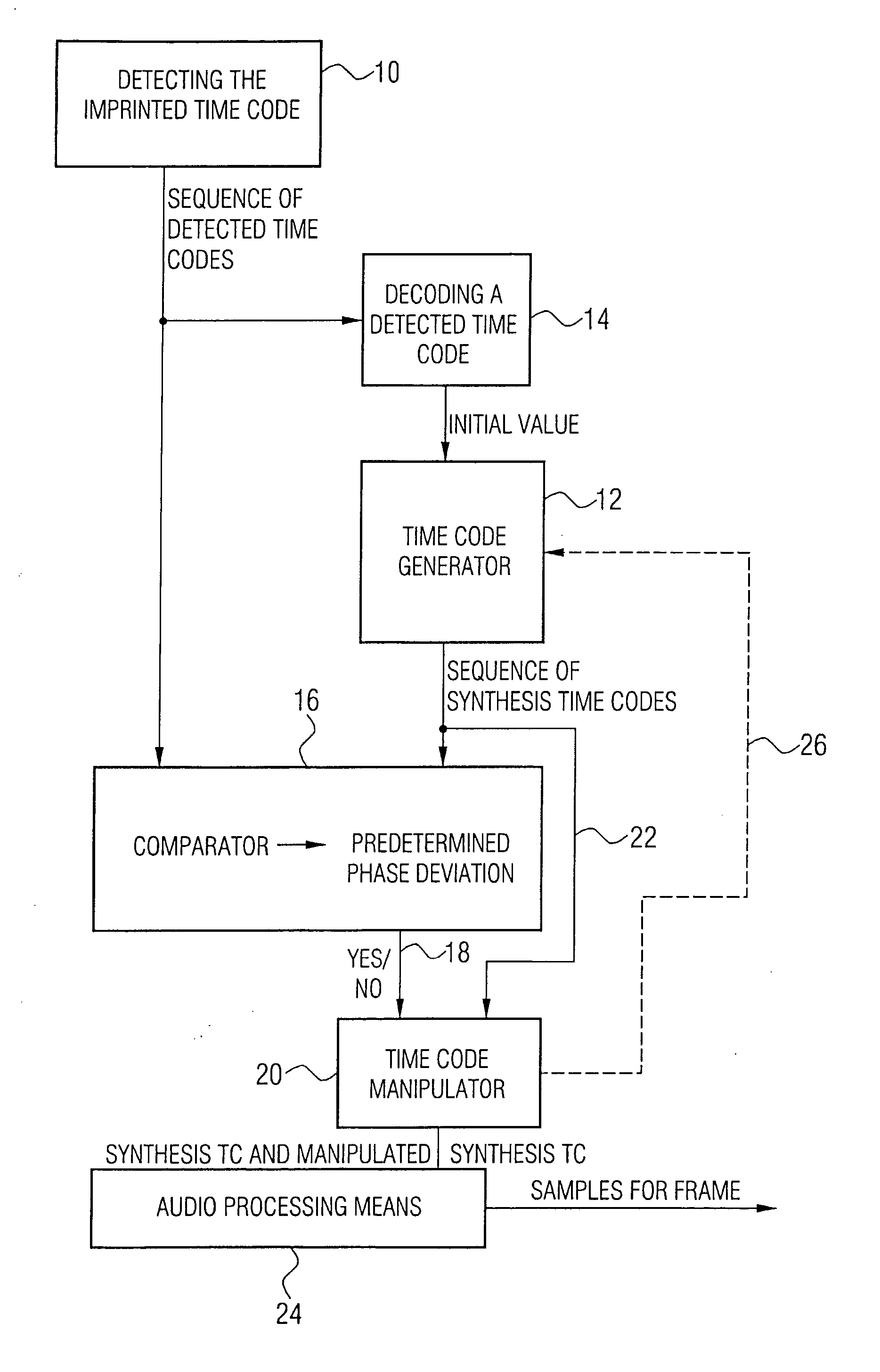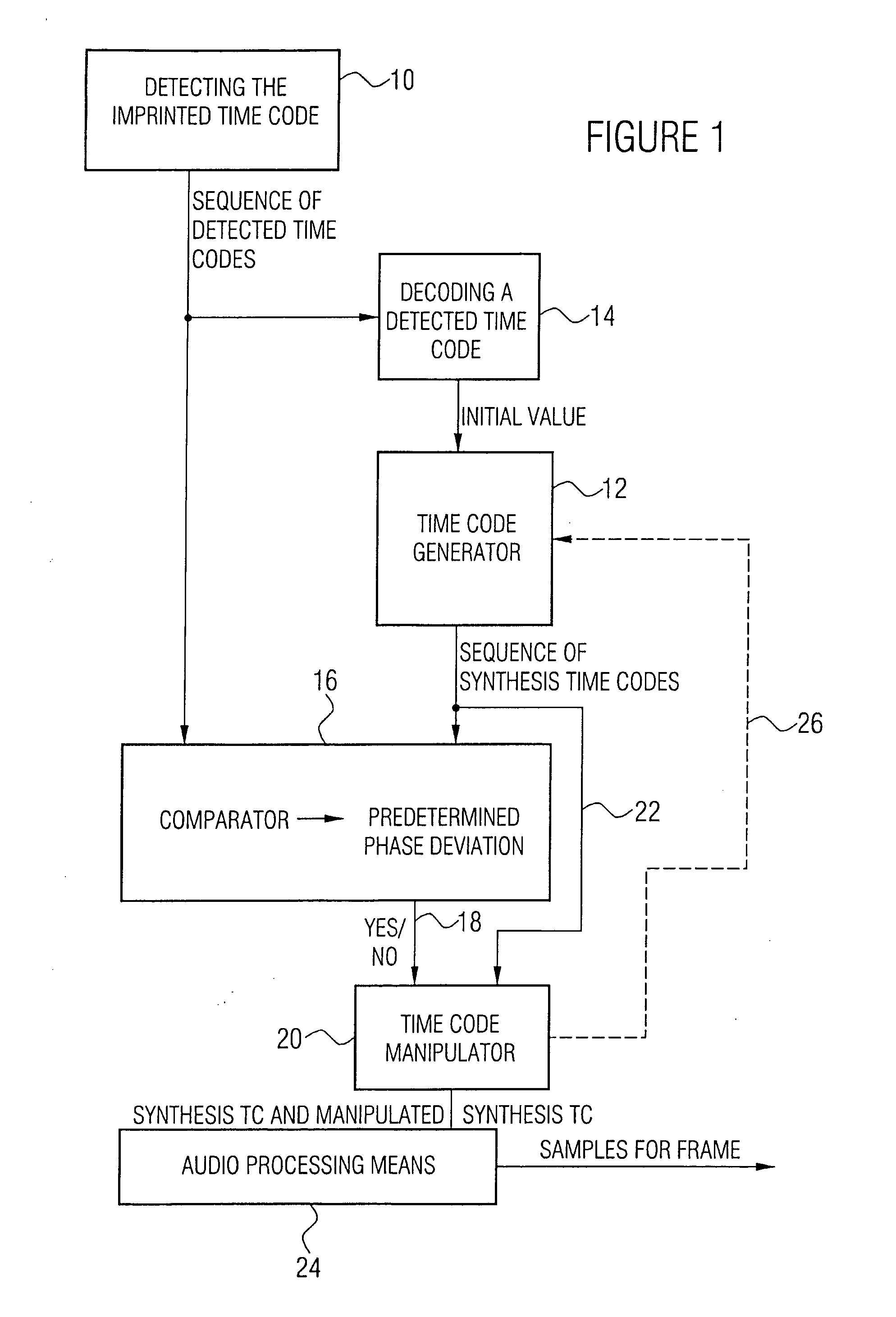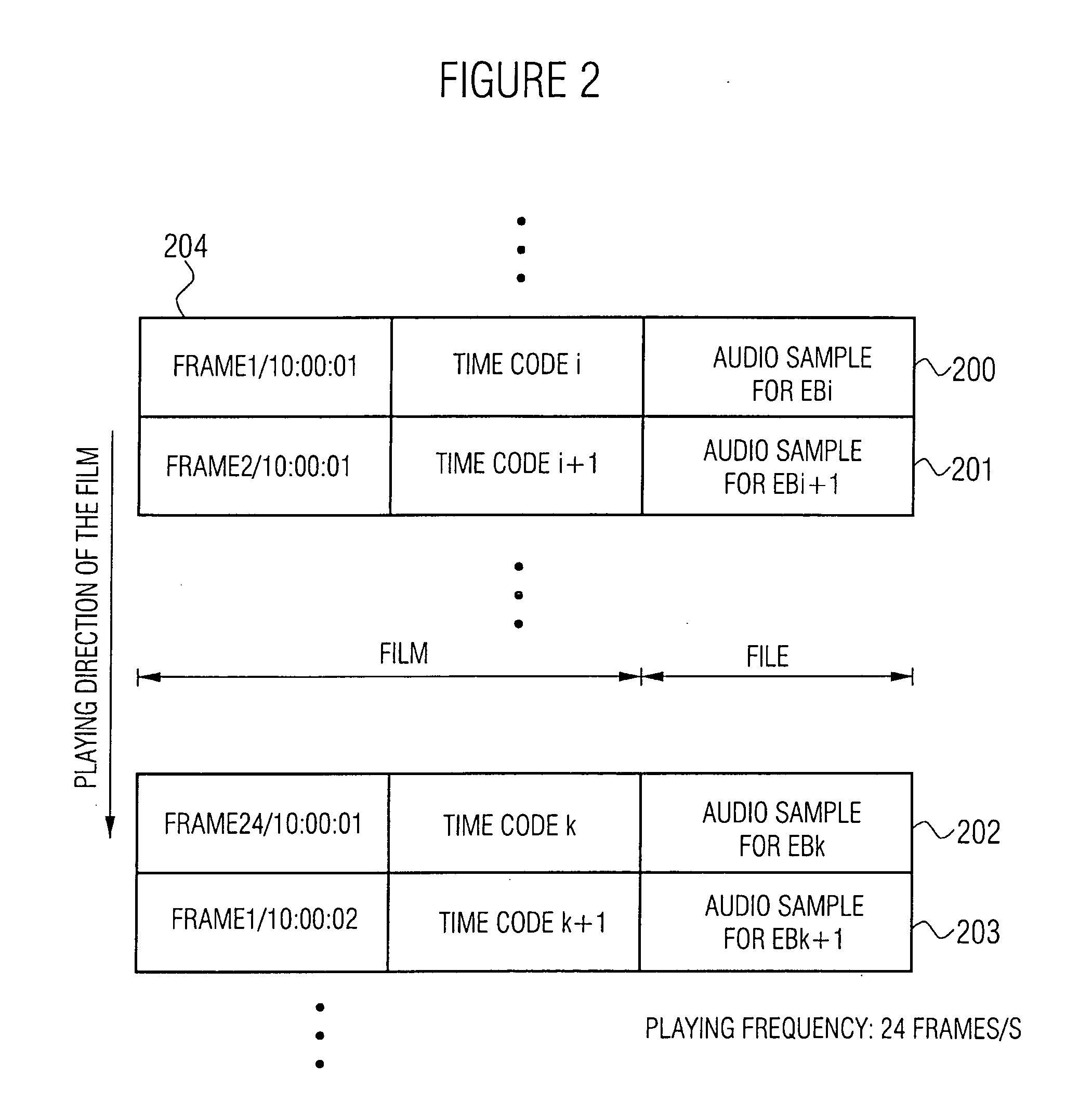Apparatus and method for synchronizing an audio signal with a film
a technology applied in the field of synchronizing an audio signal and a film, can solve the problems of affecting the quality of audio, the setup location of the loudspeaker, and the spatial sound reproduction of natural but also virtual environments, and achieve the effect of fast and extensive distribution of inventive concepts
- Summary
- Abstract
- Description
- Claims
- Application Information
AI Technical Summary
Benefits of technology
Problems solved by technology
Method used
Image
Examples
Embodiment Construction
[0050]FIG. 1 shows a block diagram of a preferred embodiment of a device for synchronizing an audio signal, present in discrete samples, with a film comprising a sequence of frames which may be reproduced with an frame frequency. As it was illustrated with reference to FIG. 2, each frame includes an imprinted time code which indicates a position of the frame in the sequence of frames. Further, a predetermined number of discrete samples of the audio signal is associated with each frame. If a frame reproduction frequency of 24 frames per second is selected, and if the audio signals are based on a sample frequency of 48 kHz, then a number of 2000 discrete audio samples is typically associated with a frame.
[0051]FIG. 1 shows means 10 for detecting the imprinted time codes for the sequence of frames. Means 10 for detecting provides on the output side a sequence of detected time codes. The device shown in FIG. 1 further includes a time code generator 12 which is implemented in order to g...
PUM
| Property | Measurement | Unit |
|---|---|---|
| time | aaaaa | aaaaa |
| time | aaaaa | aaaaa |
| time | aaaaa | aaaaa |
Abstract
Description
Claims
Application Information
 Login to View More
Login to View More - R&D
- Intellectual Property
- Life Sciences
- Materials
- Tech Scout
- Unparalleled Data Quality
- Higher Quality Content
- 60% Fewer Hallucinations
Browse by: Latest US Patents, China's latest patents, Technical Efficacy Thesaurus, Application Domain, Technology Topic, Popular Technical Reports.
© 2025 PatSnap. All rights reserved.Legal|Privacy policy|Modern Slavery Act Transparency Statement|Sitemap|About US| Contact US: help@patsnap.com



